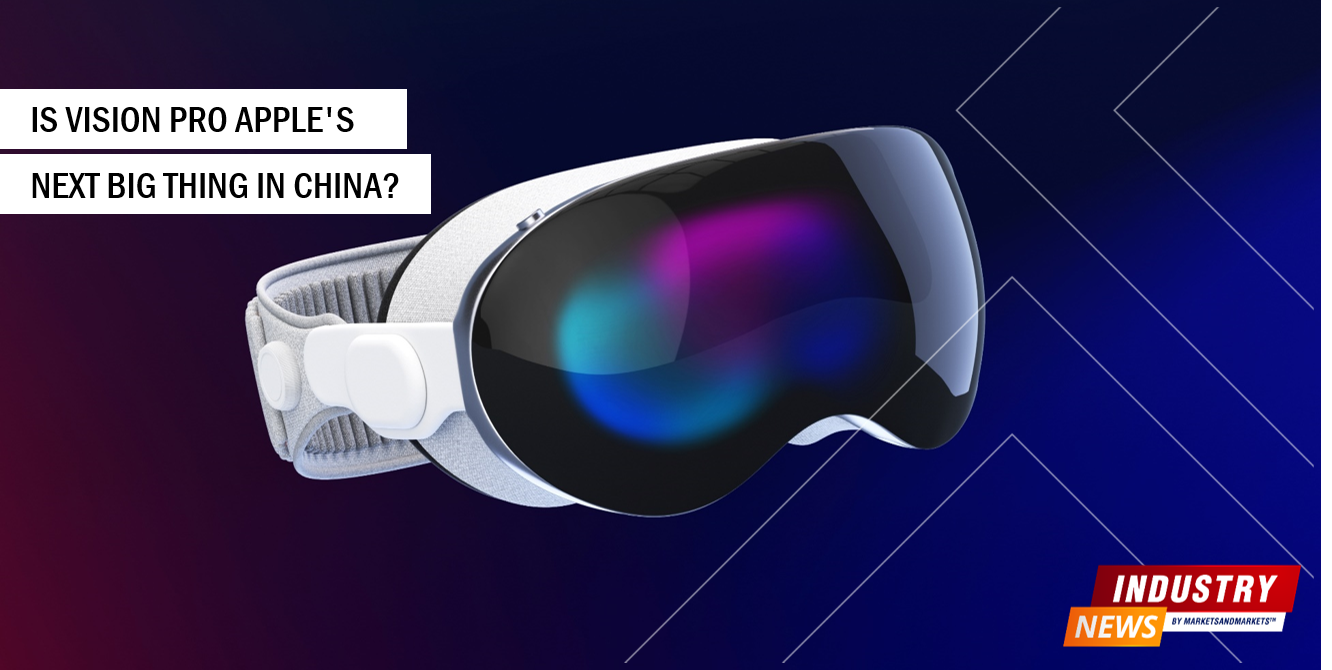A Tectonic Shift: Industries at the Crossroads of Spatial Computing Innovations

This News Covers
However, it is important to understand and address potential concerns. Questions pertaining to privacy, data security, and the social implications of this technology cannot be overlooked. Spatial computing, like any technology, needs to be wielded with prudence, ensuring it empowers rather than exploits individuals. The potential for over-reliance is present, and appropriate safeguards must be put into place to avert any pitfalls. As this is the first version, further developments should address concerns and make futuristic looking immersive technologies, a reality.
From an economist's perspective, spatial computing is a harbinger of progress and prosperity. It's a new factor of production that has the potential to drive growth, innovation, and competition. However, its benefits need to be broadly shared. As we prepare for this new digital frontier, product and usage policies must foster an environment where everyone can reap the rewards, ensuring a socially equitable and economically sustainable embrace of spatial computing[1]
Which top industries will likely be impacted by Spatial Computing Advancements?
- Virtual Reality Devices: The launch of Apple's Vision Pro could usher in a momentous shift in the VR device market. Not only does it present a direct competition to existing players, but it also sets a new benchmark in terms of product quality, performance, and user experience. The unique hardware-software integration in Vision Pro, along with the advanced technologies like the M2 and R1 chips, will likely prompt other manufacturers to innovate and improve their own offerings to stay competitive.
- Content Creation: The high-resolution displays and powerful processing capabilities of the Vision Pro have the potential to transform the way content creators work. This device offers a new platform for immersive storytelling and digital art, opening up exciting possibilities for filmmakers, graphic designers, and digital artists. Additionally, with Vision Pro's introduction, the demand for VR-compatible content will likely skyrocket, giving content creators a whole new medium to explore and monetize.
- Gaming: The gaming industry stands to be one of the most significantly impacted sectors. Vision Pro's impressive processing power and high-resolution displays offer a level of immersion and realism that surpasses many current VR gaming setups. As a result, game developers may need to design or adapt their games to leverage these capabilities fully. This could usher in a new era of blockchain powered gaming, VR gaming, Metaverse characterized by games that offer truly immersive experiences and utilize the device's unique features.
- Entertainment: The entertainment industry will also see a profound impact due to the launch of the Vision Pro. The device's capabilities offer unprecedented opportunities for immersive entertainment experiences, from watching movies and concerts in virtual environments to exploring virtual tours of historical sites or museums. The Vision Pro may also catalyze a shift towards more immersive, VR-based entertainment, reshaping consumer expectations and forcing the industry to innovate. It's also likely to influence the development and consumption of future AR/VR content in the entertainment industry, from movies and television shows to live events and performances.
Which top companies and products may be impacted due to advancements in Spatial Computing?
Such innovative technologies that could redefine our daily lives always generate great excitement across industries and geographies.
With the recent advancements in spatial computing, the potential for groundbreaking changes across industries has never been more apparent.
Spatial computing allows the digitization of people, machines, and their environments, effectively enhancing interactions and operations. This technology is poised to transform industries such as VR, content creation, and gaming, as we navigate the complex intertwining of the physical and digital worlds.
However, it's crucial to recognize that the impact will vary across use cases. For instance, as you read below examples you may not agree with some such as the example of painting in a 3D space. Although exciting, may currently face challenges in achieving the tactile sensation and precision of traditional methods.
As per a conversation I recently had with a development team leader specializing in spatial computing, there's much excitement but also significant challenges. The technical aspects of understanding and interpreting physical spaces in real-time, especially in varying environments, are a monumental task. Additionally, perfecting the interplay between hardware and software components to deliver seamless, realistic experiences is another hurdle in the advancement of spatial computing. Nevertheless, the sheer scope of spatial computing's potential impacts makes it a field ripe for exploration and innovation.
Virtual Reality Devices:
- Oculus Quest 2: With spatial computing, this headset could provide more immersive and interactive VR experiences by understanding its environment and the user's movements in it.
- Oculus Rift S: Spatial computing could optimize the game environment, providing more immersive experiences.
- Oculus Go: Entertainment experiences could be transformed by making media content more interactive with spatial computing.
- Vive Pro: Professional applications could become even more realistic with the integration of spatial computing.
- Vive Cosmos: With spatial computing, the integration between modules could become more seamless.
- Vive Focus Plus: Business applications could become more efficient and safer with the understanding of space provided by spatial computing.
- PlayStation VR: Spatial computing could enhance gaming experiences by providing a more immersive environment and gameplay.
- PSVR Aim Controller: Spatial computing could increase the precision and responsiveness of the controller.
- PSVR Move Motion Controller: A more accurate tracking of movements could be achieved with spatial computing.
- Samsung Gear VR: With the help of spatial computing, VR experiences could be more immersive and interactive as done by Vision Pro.
- HMD Odyssey: Mixed reality experiences could be enriched with the spatial understanding provided by spatial computing.
- Exynos VR: The eye-tracking feature could be enhanced with spatial computing for a more personalized VR experience.
- Daydream View: VR experiences could become more immersive with the understanding of space provided by spatial computing.
- Cardboard: Even with this simple viewer, spatial computing could enhance experiences by providing more interactive content.
- Tilt Brush: Painting in 3D space could become even more intuitive with spatial computing.
- Oculus (Facebook):
- HTC:
- Sony:
- Samsung:
- Google:
Content Creation:
- Adobe After Effects: Spatial computing could enable creators to develop more immersive visual effects.
- Adobe Premiere Pro: Spatial computing could allow for editing in a 3D space, revolutionizing video production.
- Adobe Photoshop: The 3D capabilities of Photoshop could be greatly enhanced with spatial computing.
- Autodesk 3ds Max: With spatial computing, design visualization could be taken to a new level, enabling designers to optimize their models.
- Autodesk Maya: The rendering process in Maya could be improved with spatial computing, allowing for more realistic animations.
- AutoCAD: Spatial computing could enhance both the 2D and 3D drafting process, improving efficiency and output quality.
- Unity: Spatial computing could enable game developers to create more immersive and interactive game environments.
- Unity Asset Store: The assets and tools available could be expanded to include spatial computing capabilities.
- Unity MARS: The augmented reality experiences created with MARS could be enhanced with the inclusion of spatial computing.
- Unreal Engine: Spatial computing could allow for more interactive and realistic environments in the 3D creation platform.
- Fortnite: The creative building aspects of Fortnite could be revolutionized with spatial computing.
- Epic Online Services: Spatial computing could allow developers to create more immersive online gaming experiences.
- Blender: This 3D creation suite could benefit from spatial computing by providing more advanced tools for model creation and animation.
- Blender Cloud: With spatial computing, this creative hub could offer new possibilities for artists and developers.
- Blender Animation Studio: Spatial computing could enable the studio to produce more immersive and interactive animated films.
- Adobe:
- Autodesk:
- Unity Technologies:
- Epic Games:
- Blender Foundation:
Gaming:
- Nintendo Switch: Spatial computing could add a new level of immersion to games on this console.
- The Legend of Zelda: Breath of the Wild: The open world in this game could become even more interactive with spatial computing.
- Super Mario Odyssey: Spatial computing could enhance environment interactions in this 3D platform game.
- FIFA series: Spatial computing could make the simulation more realistic, impacting player actions and stadium environments.
- Battlefield series: First-person shooter games could become more immersive with spatial computing enhancing the game environment.
- The Sims series: The life simulation could become even more realistic with spatial computing allowing for more interactive environments.
- Call of Duty series: Spatial computing could provide more immersive combat environments and strategies.
- World of Warcraft: The massively multiplayer online game could become even more immersive with spatial computing enabling interactive environments.
- Overwatch: Team strategies and environment interactions in this shooter game could be enhanced with spatial computing.
- Assassin's Creed series: The action-adventure game environments could become more realistic and interactive with spatial computing.
- Far Cry series: First-person shooter games could have more immersive environments with spatial computing.
- Watch Dogs series: The interaction with the game environment in this action-adventure series could be enhanced with spatial computing.
- Dota 2: This multiplayer online battle arena game could provide more interactive gameplay with spatial computing.
- Counter-Strike: Global Offensive: Spatial computing could enhance strategy planning and environment interactions in this first-person shooter game.
- Nintendo:
- Electronic Arts:
- Activision Blizzard:
- Ubisoft:
- Valve Corporation:
An Introduction to Spatial Computing
Spatial computing, with its capabilities to digitize activities and interactions, could revolutionize these industries, providing more interactive, efficient, and immersive experiences.
These are some noteworthy aspects of spatial computing
We'd be happy to help clear up any potential confusion about spatial computing. Here are five common questions and their answers:
Spatial Computing is human interaction with a machine in which the machine retains and manipulates referents to real objects and spaces – Simon Greenwold [2]
What exactly is spatial computing?
Spatial computing involves the integration of physical space and digital information. It uses a combination of technologies like Augmented Reality (AR), Virtual Reality (VR), computer vision, and Artificial Intelligence (AI) to allow computer systems to interact with the physical world in 3D, much like humans do.[3]
How does spatial computing work?
Spatial computing uses sensors, cameras, and software to create a digital map of a physical environment. Then, using this map, it allows users or automated systems to interact with digital objects that appear to exist within that physical space. This technology essentially bridges the gap between the digital and physical worlds.
What makes spatial computing unique from AR and VR?
While AR overlays digital information on the physical world and VR creates entirely digital worlds, spatial computing goes a step further. It integrates digital objects with the physical world in a way that allows them to interact with each other. This means digital objects can respond to changes in the physical environment and vice versa.
What are the limitations of spatial computing?
Like all technologies, spatial computing has its challenges. Accurately mapping and interpreting the physical environment, particularly dynamic or complex environments, can be difficult. The technology also requires significant processing power and sophisticated software, which may not be available or affordable for all users. Additionally, privacy and security concerns must be addressed as spatial computing becomes more prevalent.
What are some potential applications of spatial computing?
Spatial computing has a broad range of applications across many sectors. In gaming, it can create more immersive experiences. In healthcare, it could assist in surgical planning or patient care. In manufacturing, it could enhance design and improve efficiency. And in education, it could offer new ways of learning and interaction.
Spatial computing is an evolving field, and while these answers should provide a good foundation, the possibilities are constantly expanding.
GET AHEAD
Top Research Reports to Fuel Your Industry KnowledgeEditor's Pick


Information and Communication Technology
Insurtech Funding News - Coverdash raises USD 13.5 Million
PODCASTS

Sustainable Digital Transformation & Industry 4.0
Sanjay Kaul, President-Asia Pacific & Japan, Cisco, and host Aashish Mehra, Chief Research Officer, MarketsandMarkets, in conversation on unraveling 'Sustainable Digital Transformation and Industry 4.0'
11 July 2023|S2E12|Listen Now

Generative AI
Prasad Joshi, Senior Vice President-Emerging Technology Solutions, Infosys, and host, Vinod Chikkareddy, CCO, MarketsandMarkets, in exploring the recent advances in AI and the generative AI space.
7 Nov 2023|S2E13|Listen Now
Metaverse in Gaming Market
Download Whitepaper
Spatial computing uses sensors, cameras, and software to create a digital map of a physical environment.
Spatial computing, with its capabilities to digitize activities and interactions, could revolutionize these industries, providing more interactive, efficient, and immersive experiences.












